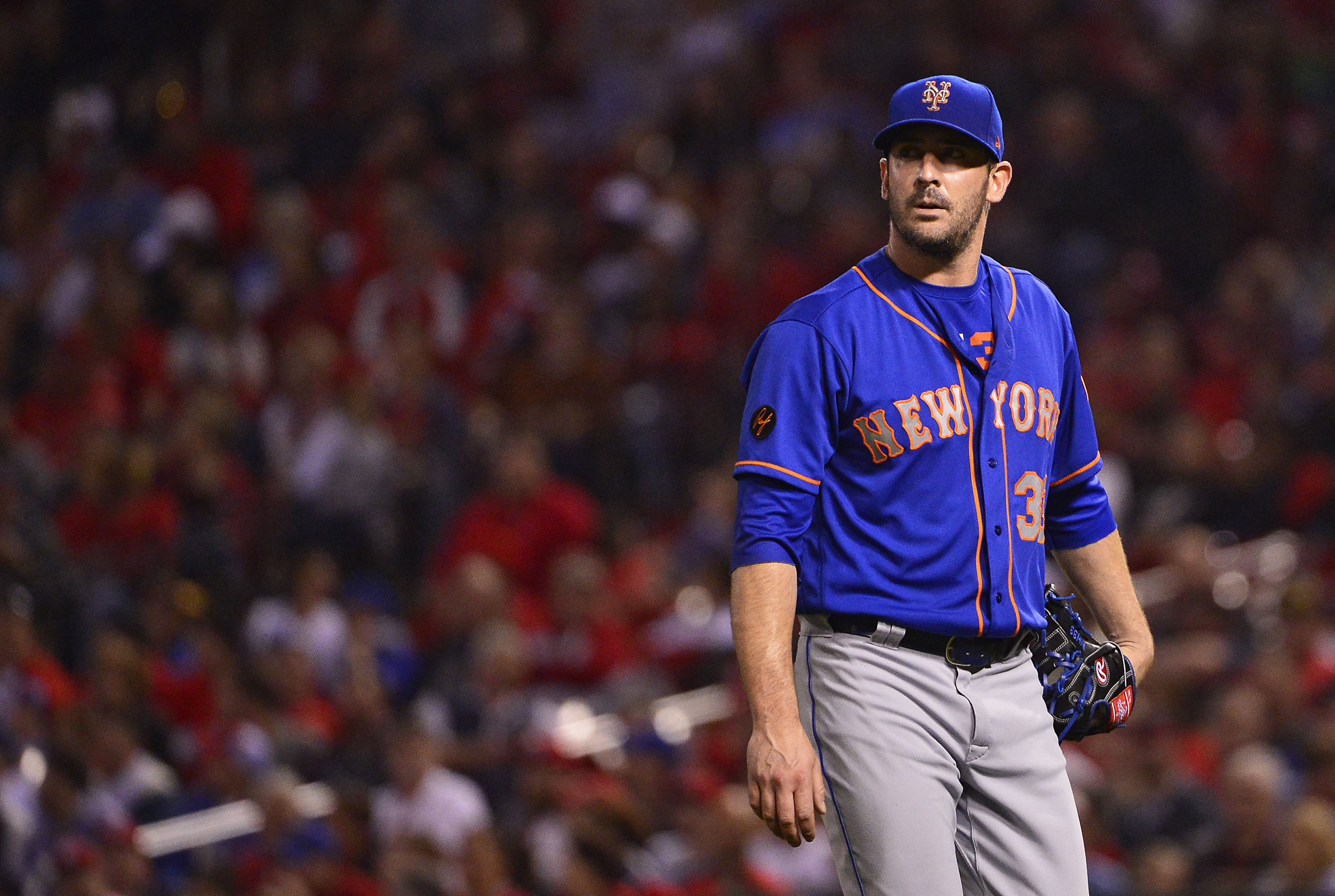What a long, strange trip it’s been.
After a brief stint as a rookie with the club in the second half of the 2012 season, Matt Harvey set the world on fire the following year, pitching to a 2.27 ERA with a 2.01 FIP, 0.931 WHIP and 191 strikeouts, officially becoming The Dark Knight. That is, of course, until that August when it was revealed that the man who had finally brought hope back to a downtrodden fanbase had a torn ulnar collateral ligament in his pitching elbow.
Despite missing the entire 2014 season, Harvey returned in 2015 resembling the pitcher of old. In 29 starts that year, Harvey pitched to a 2.71 ERA with a 3.05 FIP, 1.019 WHIP and 188 strikeouts in the regular season. After making four starts that postseason, Harvey pitched a combined 216 innings in 2015 — the most innings ever thrown by a pitcher in their first season following Tommy John surgery.
The lasting image of the Matt Harvey everyone knew and loved was the man who ran out onto the field in the ninth inning of the World Series to thunderous applause. That was the final time The Dark Knight was ever seen on a baseball field.
Ever since that night, things have spiraled for Harvey; the former ace has pitched to a 9-19 record with a 5.79 ERA, 4.88 FIP, 1.565 WHIP while allowing 249 hits and 77 walks in 208.1 innings pitched.
At the start of 2016, it appeared as if a change in his mechanics was the cause of Harvey’s struggles, but instead thoracic outlet syndrome made it difficult for him to even feel the baseball in his hand due to nerve damage. For the second time in his career, Harvey’s season ended early due to major surgery.
Unlike Tommy John, thoracic outlet surgery hasn’t been as common in the major leagues over the last decade. And while a majority of pitchers have been able to effectively recover from Tommy John surgery, the careers that have successfully continued following thoracic outlet surgery is a much smaller number.
Yet despite having Tommy John surgery, pitching the most innings in baseball history following said procedure and then undergoing thoracic outlet surgery (where he needed to get one of his ribs removed), there is still a widespread narrative that the downfall of Matt Harvey has been caused because of his brash personality and mindset.
That is just patently false.
Let’s be real: Matt Harvey is not the most friendly of guys when it comes to how he’s dealt with the media. I think we all acknowledge this. But that also isn’t anything new. When Harvey was pitching to a 2.53 ERA in his first three seasons, nearly everyone loved his outward personality, confident attitude and celebrity status. Now that he’s pitching to an ERA that has eclipsed 5.00, though, people suddenly have a problem with it and think it’s the cause of his issues.
Matt Harvey’s velocity hasn’t decreased by a mile per hour each of the last three years because of his personality. His walk rate hasn’t increased over the last three years because of his personality, either. Nor is his inability to rarely pitch past the fifth inning because of his personality. This is medical, and it can all be traced back to the moment he was struck with thoracic outlet syndrome.
It may not be what people want to hear, but Harvey is a sympathetic character in this story. That being said, his actions haven’t exactly made him someone who’s easy to root for.
In 2015, Harvey was largely scrutinized for showing up late to the team’s first postseason workouts. Last season, there was the incident where Harvey didn’t even show up to Citi Field for a game and was suspended by the team for three games.
This season, things have devolved even further, as Mickey Callaway and the club made the decision to transition the struggling Harvey to the bullpen, just one day after the 29-year-old defiantly stated that he was a starting pitcher.
“On a scale of one-to-10, I obviously am at a 10 with being pissed off,” Harvey told reporters after being notified of the team’s decision.
The first relief outing of his career appeared to be more of the same, as Harvey’s velocity remained around 93 mph, his command was lacking and he allowed the Cardinals to take the lead immediately after the Mets came back to tie the game. Despite his somewhat shaky bullpen debut, New York rallied for one of their best wins of the season, but after the extra inning victory, Harvey was nowhere to be found, leaving rookie catcher Tomás Nido to answer questions about the righthander’s outing.
The following day, Harvey reportedly laughed as journalists approached him in the clubhouse, telling them “I have nothing to say to you guys.” When pressed as to why, Harvey replied, “I don’t [expletive] want to.”
While I’m on Harvey’s side here, I also acknowledge that it’s a part of a professional athlete’s job to speak with reporters. Yes, Harvey does not owe it to the media to answer their questions, but when he chooses not to, it leads to his manager and his teammates having to answer for him.
When it comes to Matt Harvey, most people tend to feel decidedly one way or the other. But, like most things in life, the reality lies somewhere in between.
Due to the serious medical procedures in his past, Harvey will likely never be the same pitcher he once was, and that’s not his fault. But he could also make life a little easier on himself with his off-the-field actions, which would go a long way in reminding people that he’s truly a sympathetic figure in this story; not the villain.
Photo credit: Jeff Curry – USA Today Sports
